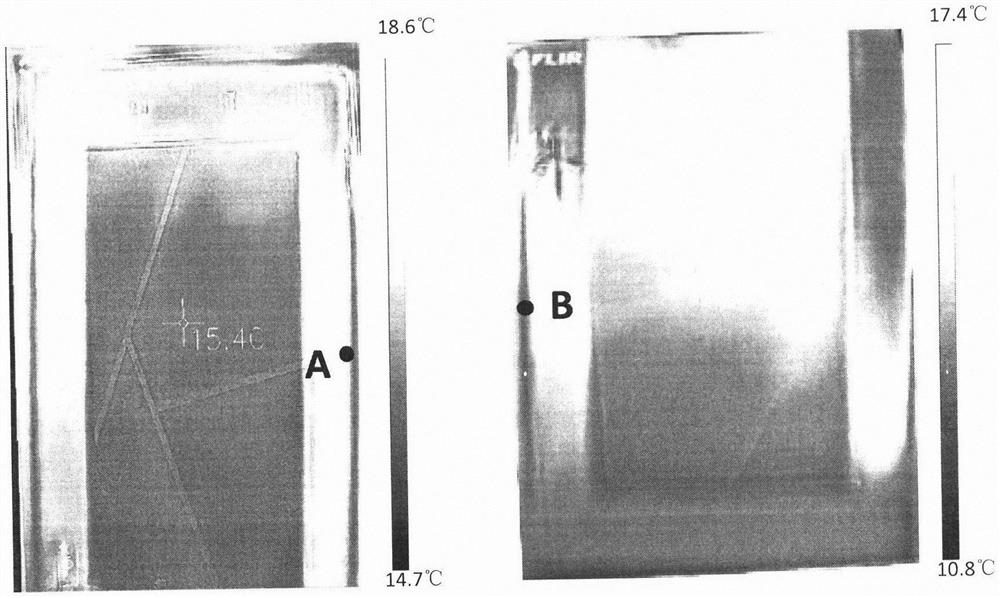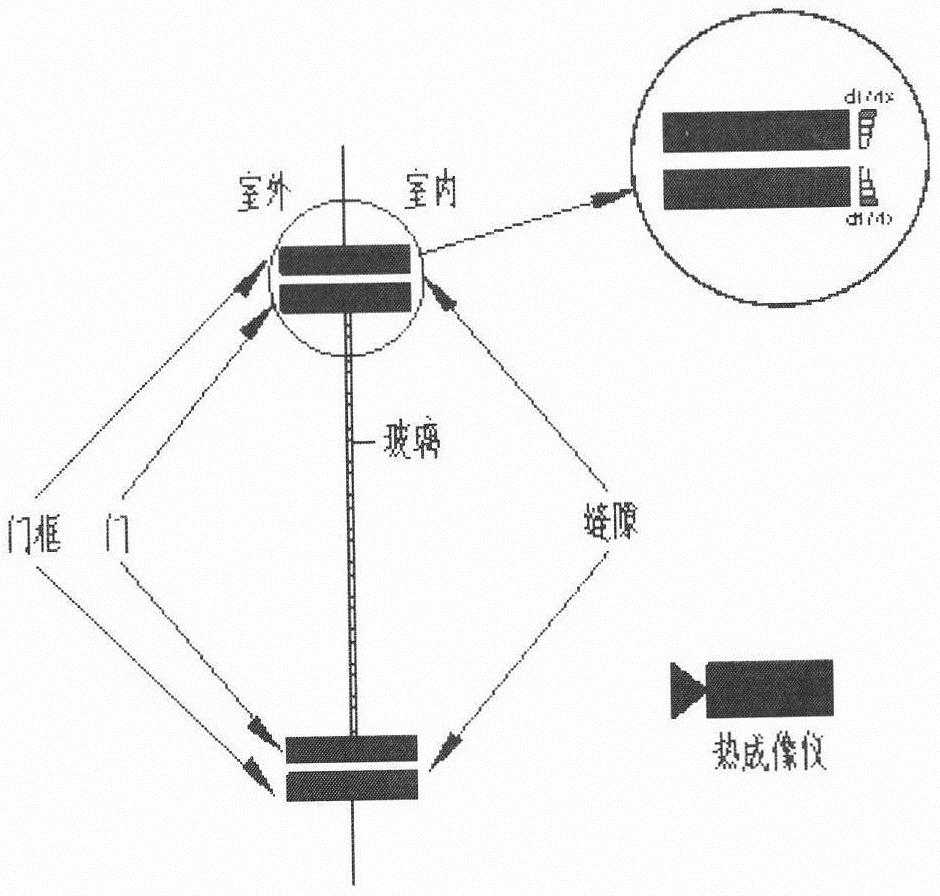Quantitative measurement method of cold and hot air penetration based on infrared thermal imaging technology
An infrared thermal imaging and penetration technology, which is used in measurement devices, fluid tightness testing, and machine/structural component testing. Accuracy, Overcome Low Efficiency Effects
- Summary
- Abstract
- Description
- Claims
- Application Information
AI Technical Summary
Problems solved by technology
Method used
Image
Examples
Embodiment Construction
[0034] The following examples are used to illustrate the present invention, but are not used to limit the scope of the present invention. After reading the content taught by the present invention, those skilled in the art can make various changes or modifications to the present invention, and these equivalent forms also fall within the scope defined by the appended claims of the present application.
[0035] figure 2 Shown is the infrared thermal image of the bathroom glass door of a residential building in Nanjing in winter. The indoor and outdoor pressure difference on both sides of the door is 0.5Pa, and the outdoor air temperature is 15°C; the system schematic diagram is as follows image 3 As shown, the infrared camera mobile phone probe was used in the test:
[0036] (1) Since the bathroom can create stable air flow conditions through exhaust, and can control the temperature difference between inside and outside by turning on the heating, the bathroom door is selected ...
PUM
 Login to View More
Login to View More Abstract
Description
Claims
Application Information
 Login to View More
Login to View More - R&D
- Intellectual Property
- Life Sciences
- Materials
- Tech Scout
- Unparalleled Data Quality
- Higher Quality Content
- 60% Fewer Hallucinations
Browse by: Latest US Patents, China's latest patents, Technical Efficacy Thesaurus, Application Domain, Technology Topic, Popular Technical Reports.
© 2025 PatSnap. All rights reserved.Legal|Privacy policy|Modern Slavery Act Transparency Statement|Sitemap|About US| Contact US: help@patsnap.com



